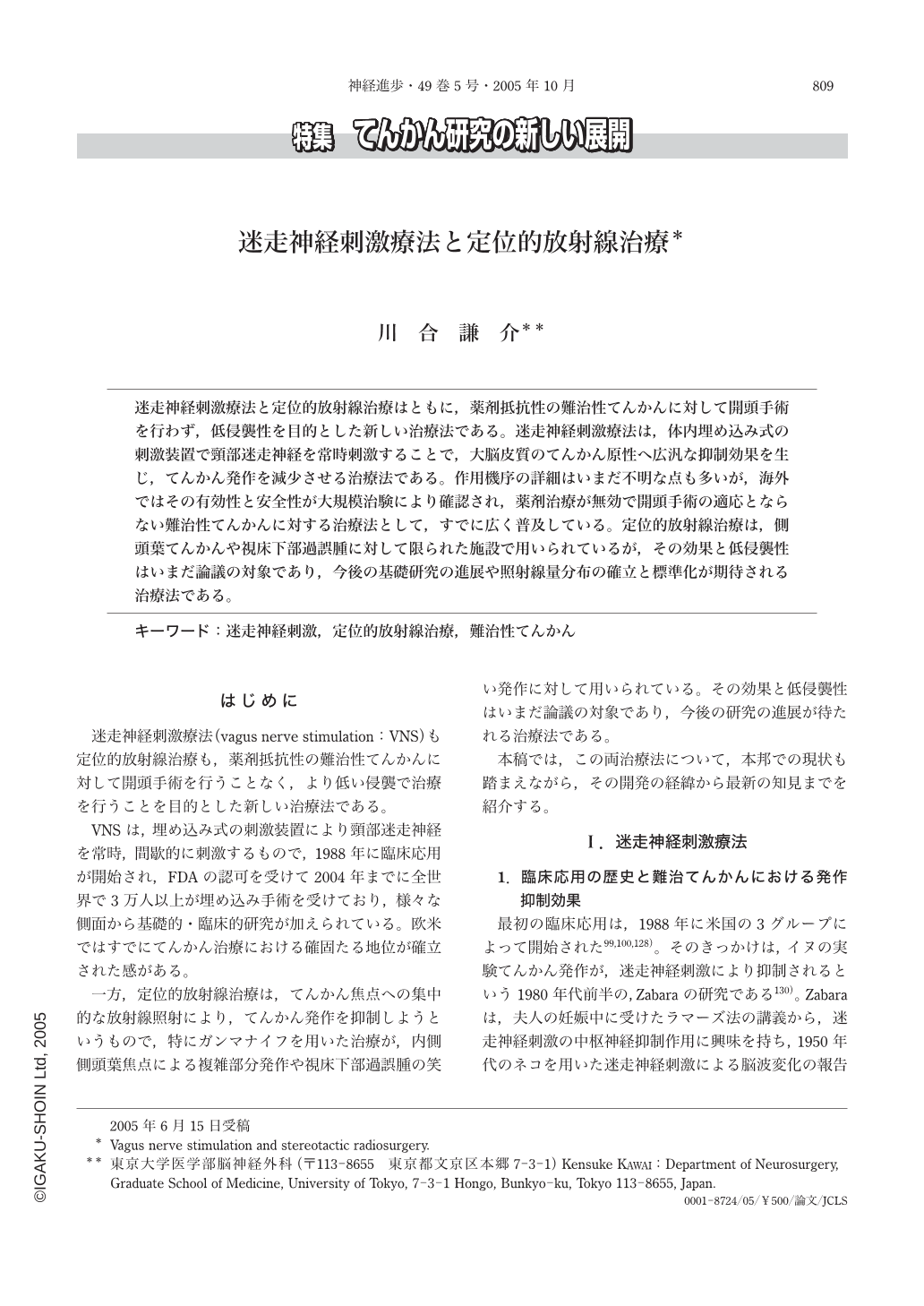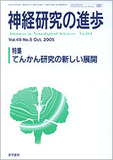Japanese
English
- 有料閲覧
- Abstract 文献概要
- 1ページ目 Look Inside
迷走神経刺激療法と定位的放射線治療はともに,薬剤抵抗性の難治性てんかんに対して開頭手術を行わず,低侵襲性を目的とした新しい治療法である。迷走神経刺激療法は,体内埋め込み式の刺激装置で頸部迷走神経を常時刺激することで,大脳皮質のてんかん原性へ広汎な抑制効果を生じ,てんかん発作を減少させる治療法である。作用機序の詳細はいまだ不明な点も多いが,海外ではその有効性と安全性が大規模治験により確認され,薬剤治療が無効で開頭手術の適応とならない難治性てんかんに対する治療法として,すでに広く普及している。定位的放射線治療は,側頭葉てんかんや視床下部過誤腫に対して限られた施設で用いられているが,その効果と低侵襲性はいまだ論議の対象であり,今後の基礎研究の進展や照射線量分布の確立と標準化が期待される治療法である。
Vagus nerve stimulation and stereotactic radiosurgery represent novel and less invasive therapeutics for medically intractable epilepsy.
Chronic stimulation of the left vagus nerve with implanted generator and electrodes inhibits seizure susceptibility of the cerebral cortices. While the underlying mechanisms of the effect remains to be further elucidated, the efficacy and safety of vagus nerve stimulation have been established by randomized clinical trials in the United States and European countries. It has been widely accepted as a treatment option for patients with medically intractable epilepsy and for whom brain surgery is not indicated. The primary indication of vagus nerve stimulation in the clinical trials was localization-related epilepsy in adult patients but efficacy in a wide range of patient groups such as generalized epilepsy and children has been reported. Improvements in daytime alertness, mood, higher cognitive functions and overall quality of life have been reported other than the effect on epileptic seizures. Since the devices are not approved for clinical use in Japan by the Health, Labor and Welfare Ministry, there exist barriers to provide this treatment to patients at present.
Stereotactic radiosurgery has been used for temporal lobe epilepsy and hypothalamic hamartoma, but it is still controversial whether the therapy is more effective and less invasive than brain surgery. Promising results of gamma knife radiosurgery for medically intractable temporal lobe epilepsy with unilateral hippocampal sclerosis have been reported essentially from one French center. Results from others were not as favorable. There seems to be an unignorable risk of brain edema and radiation necrosis when the delivered dose over the medial temporal structures is high enough to abolish epileptic seizures. A randomized clinical trial comparing different marginal doses is ongoing in the United States. Clinical trials like this, technical advancement and standardization of the dose planning, as well as experimental studies supporting the antiepileptic effect of ionizing radiation, are further required for this treatment option to be accepted as a standard therapeutic.

Copyright © 2005, Igaku-Shoin Ltd. All rights reserved.


